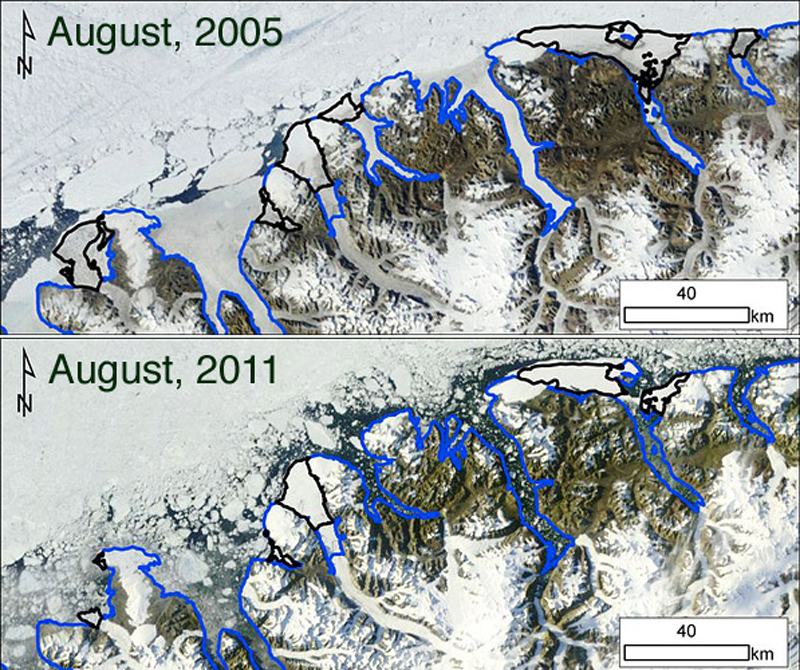
In these satellite images, taken at the end of August, 2005 and August, 2011, respectively, the Ellesmere Island ice shelves are outlined in black. In the 2011 image, the Serson shelf, located on the far left, has decreased in size significantly, while the Ward Hunt shelf, located on the far right, has split into two pieces.
Vi har en skön värme i Sverige just nu. Alla njuter av denna värme. Läste nyligen att de fasta havsisarna längs Kanadas nordkust (ice shelves) bryts upp undan för undan. Se http://www.dailykos.com/stories/1021450/full_content
Det sägs ”As they disappear, it implies we are returning to conditions unseen in the Arctic for thousands of years.”
Är detta verkligen sant?
Denna förändring började för 100 år sedan vid slutet av den lilla istiden och har pågått sedan dessa med vissa avbrott som på 1980-talet. Se https://en.wikipedia.org/wiki/Ward_Hunt_Ice_Shelf
Men hur var det då förr i tiden?
I en artikel ”Holocene dynamics of the Arctic's largest ice shelf” sägs det att ”Paleoecological data then indicate that the Ward Hunt Ice Shelf remained stable for almost three millennia before a major fracturing event that occurred ∼1,400 years ago. After reformation ∼800 years ago, freshwater was a constant feature of Disraeli Fiord until the catastrophic drainage of its epishelf lake in the early 21st century.”
Artikeln säger vidare att för 4000 år sedan fanns inte dessa fasta kustisar. De bildades för 4000 år sedan då klimatet blev kallare, de sk neoglaciationen. Och under medeltiden 600 – 1200, en period på ca 600 år, var det en tid då dessa isar genomgick en liknande förändring, ” a major fracturing event that occurred”. Så intet nytt under solen.